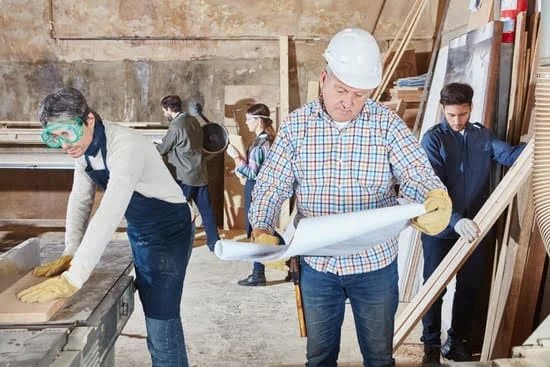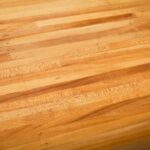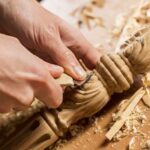When it comes to woodworking, the choice of wood is crucial in determining the quality and outcome of the project. One type of wood that has been gaining attention for its versatility and unique characteristics is Crepe Myrtle wood. Many woodworking enthusiasts are wondering, “Is Crepe Myrtle wood good for woodworking?” In this article, we will explore the properties of Crepe Myrtle wood and its suitability for various woodworking projects.
Crepe Myrtle trees are native to Asia and are known for their beautiful clusters of flowers. The wood obtained from these trees is prized for its strength, durability, and attractive appearance. It is often used in furniture making, cabinetry, and even decorative items due to its unique grain patterns and color variations. The question of whether Crepe Myrtle wood is suitable for woodworking has sparked a debate among craftsmen and hobbyists alike.
In this comprehensive guide, we will delve into the characteristics of Crepe Myrtle wood, the benefits and challenges of working with it, as well as provide tips for handling this type of wood effectively in woodworking projects. Additionally, we will compare Crepe Myrtle wood with other popular types of wood used in woodworking to determine its strengths and limitations.
Whether you are a seasoned woodworker or just starting out, understanding the potential of Crepe Myrtle wood will help you make informed decisions when selecting materials for your next project.
Characteristics of Crepe Myrtle Wood
Crepe Myrtle Wood, known for its beauty and versatility, is a popular choice for woodworking projects. This type of wood comes from the crepe myrtle tree, which is native to India, Southeast Asia, and parts of Australia. Crepe myrtle wood has become increasingly sought after for its unique characteristics that make it an excellent choice for woodworking.
One of the main characteristics of crepe myrtle wood is its fine grain and smooth texture. This makes it ideal for creating intricate designs and detailed woodworking projects. Additionally, crepe myrtle wood has a natural resistance to decay and insects, making it a durable option for both indoor and outdoor projects. Its light weight also makes it easy to work with, allowing for greater precision and less strain on tools.
When considering crepe myrtle wood for woodworking projects, it’s important to note its beautiful color variations that range from light pink to deep reddish-brown. These tones make it an attractive choice for furniture, cabinetry, and decorative items. With proper care and maintenance, crepe myrtle wood can maintain its beauty over time, adding value to any woodworking project.
| Characteristic | Description |
|---|---|
| Grain and Texture | Fine grain and smooth texture make it ideal for detailed designs |
| Durability | Natural resistance to decay and insects makes it suitable for indoor and outdoor use. |
| Color Variation | Ranges from light pink to deep reddish-brown, making it visually appealing |
Benefits of Using Crepe Myrtle Wood for Woodworking
Crepe myrtle wood is a popular choice for woodworking due to its unique characteristics and benefits. Here are some of the key reasons why many woodworkers prefer to use crepe myrtle wood for their projects:
- Beautiful grain pattern: Crepe myrtle wood is known for its striking grain pattern, which adds visual interest to any woodworking project. The unique swirls and burls in the wood make it highly sought after for aesthetic purposes.
- Durability: Despite being lightweight, crepe myrtle wood is surprisingly durable, making it suitable for a wide range of woodworking projects. Its resilience to wear and tear ensures that finished pieces will last for many years.
- Easy to work with: Crepe myrtle wood is relatively easy to work with, making it an ideal choice for both beginner and experienced woodworkers. It can be easily cut, turned, and shaped without much difficulty.
- Versatility: This type of wood can be used for various woodworking projects such as furniture making, turning, carving, and even outdoor projects like fencing or decking.
By utilizing crepe myrtle wood in your woodworking projects, you can take advantage of these benefits while creating beautiful and long-lasting pieces. Whether you are crafting furniture, decorative items, or outdoor structures, crepe myrtle wood is a versatile option that provides both visual appeal and durability.
Challenges of Working With Crepe Myrtle Wood
Working with Crepe Myrtle wood presents a few challenges that woodworkers should be aware of. One of the main challenges is its tendency to warp and split if not properly dried and stored. Crepe Myrtle wood has a high moisture content when freshly cut, so special care must be taken to ensure it dries evenly to prevent warping and cracking. This can be achieved by air-drying the wood slowly or using a kiln for faster results.
Another challenge when working with Crepe Myrtle wood is its hardness. While this can be an advantage in some woodworking projects, it can also make it difficult to work with hand tools such as chisels and planes. It may also require sharp cutting tools and patience when shaping and smoothing the wood.
Additionally, Crepe Myrtle wood has interlocking grain patterns that can make it difficult to achieve smooth finishes. The fibers can tear out when cutting or planing the wood, leaving a rough surface if not handled carefully. Woodworkers may need to experiment with different cutting angles and techniques to minimize tear-out and achieve the desired finish.
Despite these challenges, many experienced woodworkers find ways to overcome them and appreciate the unique qualities of Crepe Myrtle wood in their projects. With proper handling and knowledge of the wood’s characteristics, it can still be a rewarding material for woodworking creations. Understanding these challenges is essential for achieving successful results when working with Crepe Myrtle wood in woodworking projects.
Best Woodworking Projects for Crepe Myrtle Wood
Crepe myrtle wood is a popular choice for woodworking projects due to its unique characteristics and a variety of benefits. The wood comes from the crepe myrtle tree, which is known for its attractive blooms and smooth, multi-toned bark. Crepe myrtle wood is highly sought after by woodworkers for its versatility and durability, making it a great option for a wide range of woodworking projects.
One of the key characteristics of crepe myrtle wood is its fine texture and beautiful grain patterns. The wood has a smooth, consistent texture that makes it ideal for carving, turning, and creating intricate details in woodworking projects.
Its natural coloring ranges from pale cream to reddish-brown, adding depth and warmth to any project. Additionally, crepe myrtle wood is known for being lightweight yet strong, making it easy to work with while also ensuring the longevity of the finished piece.
When it comes to woodworking projects, crepe myrtle wood shines in a variety of applications. From creating stunning furniture pieces such as tables, chairs, and cabinets to crafting smaller items like cutting boards, jewelry boxes, or decorative objects, this type of wood offers endless possibilities.
Its fine texture and stable properties make it suitable for precision work and detailed designs. Whether you are a beginner or an experienced woodworker, crepe myrtle wood provides a medium that offers both ease of use and high-quality results.
In addition to its favorable characteristics, working with crepe myrtle wood allows craftsmen to explore their creativity while producing unique items. It can be easily stained or polished to achieve different finishes according to specific preferences or design requirements. Moreover, the natural beauty of crepe myrtle wood makes it an excellent choice for projects where aesthetics are a top priority. Overall; this versatile material opens up numerous opportunities for creating bespoke pieces that are both functional and visually appealing.
Tips for Working With Crepe Myrtle Wood
Crepe myrtle wood is a popular choice for many woodworking projects, thanks to its unique characteristics and beautiful appearance. When working with crepe myrtle wood, there are several tips to keep in mind to ensure the best results. Here are some useful tips for working with crepe myrtle wood:
1. Selecting the Right Piece:
When choosing crepe myrtle wood for your woodworking project, look for pieces that are straight and free from knots or cracks. This will make it easier to work with and will result in a smoother finish.
2. Proper Storage:
To prevent warping or cracking, it’s important to store crepe myrtle wood properly. Keep it in a well-ventilated area with consistent humidity levels to maintain its stability.
3. Sharp Tools:
Because crepe myrtle wood can be hard and dense, using sharp tools is essential for clean cuts and smooth surfaces. Make sure your saw blades and chisels are sharp before starting your project.
4. Sanding and Finishing:
Crepe myrtle wood has a natural luster that can be enhanced through proper sanding and finishing techniques. Start with a lower grit sandpaper to remove any imperfections, then gradually move up to higher grits for a smooth finish. Finally, choose a finish that complements the natural beauty of the wood.
5. Safety Precautions:
As with any woodworking project, it’s important to follow safety precautions when working with crepe myrtle wood. Wear appropriate protective gear, such as goggles and gloves, and use caution when operating power tools.
Overall, crepe myrtle wood is an excellent choice for woodworking projects when handled correctly. Its unique grain patterns and durability make it suitable for a wide range of projects, from furniture to decorative items. By following these tips, you can achieve beautiful results with this versatile wood variety.
Comparing Crepe Myrtle Wood With Other Wood Types:
– Hardness: Crepe Myrtle Wood falls within the medium range of hardness compared to other types of hardwood.
– Durability: It is highly resistant to decay and insect damage.
– Grain Pattern: Crepe Myrtle Wood exhibits a fine to medium texture with an interlocking grain pattern.
– Color: The heartwood ranges from light brown to reddish-brown hues.
– Workability: It may be difficult to work with hand tools due to its density but is manageable with sharp cutting edges.
– Cost: In comparison with other hardwoods, Crepe Myrtle Wood tends to be more affordable which makes it a cost-effective option for woodworking projects.
Benefits of Using Crepe Myrtle Wood for Woodworking
– Beautiful Appearance: The unique grain patterns and color variations make crepe myrtle wood an attractive choice for woodworking projects.
– Stability: Creep Myrle Wood has good dimensional stability which makes it less prone to warping or twisting compared some other types of woods.
– Versatility: It can be used in various woodworking applications including turning, carving, furniture making, cabinetry etc.
These comparisons illustrate why the use of Creep Myrle Wood should not be overshadowed by other types of hardwoods considering its diverse advantage when used effectively in woodworking projects.
Comparing Crepe Myrtle Wood With Other Wood Types
When it comes to woodworking, choosing the right type of wood is crucial for the success of your project. Crepe myrtle wood is a popular choice among woodworkers, but how does it stack up against other types of wood? Let’s explore some key comparisons between crepe myrtle wood and other wood types in terms of characteristics and suitability for various woodworking projects.
Strength and Durability
One of the main reasons why crepe myrtle wood is favored by many woodworkers is its strength and durability. When compared to other hardwoods such as oak or maple, crepe myrtle wood holds its own in terms of resilience and resistance to wear and tear. Its strong grain structure makes it suitable for furniture making, outdoor projects, and even turning on a lathe.
Grain and Texture
In terms of grain pattern and texture, crepe myrtle wood offers a unique aesthetic that sets it apart from other woods. Its fine texture and smooth grain make it ideal for creating intricate details in woodworking projects such as carvings, moldings, and decorative pieces. When compared to woods with a more pronounced grain pattern, like ash or hickory, crepe myrtle’s subtle yet distinct look adds a touch of elegance to any woodworking creation.
Availability and Sustainability
Another factor to consider when comparing crepe myrtle wood with other types is its availability and sustainability. Crepe myrtle trees are widely cultivated in many regions, making the wood relatively easy to source. Additionally, crepe myrtle is considered sustainable due to its fast growth rate and ability to thrive in various climates. This makes it a more environmentally friendly choice compared to slow-growing hardwoods like walnut or mahogany.
Overall, while crepe myrtle wood may not be as widely known as some traditional hardwoods like cherry or walnut, its unique characteristics make it a great option for woodworking projects. Its strength, fine texture, and sustainability make it a versatile choice for both functional and decorative creations. Whether you’re crafting furniture, turning bowls on a lathe or carving intricate designs, crepe myrtle wood has much to offer for woodworking enthusiasts.
Final Thoughts
When it comes to determining if Crepe Myrtle Wood is good for woodworking, there are several factors to consider. From its characteristics and benefits to the challenges of working with it, determining if Crepe Myrtle Wood is suitable for your woodworking project requires careful evaluation. This section will provide final thoughts on whether Crepe Myrtle Wood is good for woodworking and offer some recommendations for using this type of wood in your projects.
Characteristics of Crepe Myrtle Wood
Crepe Myrtle Wood is known for its smooth, straight grain and fine texture, making it a popular choice for woodworking. The wood ranges in color from light pink to reddish-brown, often featuring a beautiful marbled or mottled appearance. Another noteworthy characteristic of Crepe Myrtle Wood is its stability and resistance to warping and shrinking, making it an ideal choice for various woodworking applications.
Benefits of Using Crepe Myrtle Wood for Woodworking
One of the key benefits of using Crepe Myrtle Wood for woodworking is its versatility. This wood can be easily shaped, turned, and carved, making it suitable for a wide range of projects including furniture-making, cabinetry, and decorative items. Additionally, Crepe Myrtle Wood takes stain and finish well, allowing woodworkers to achieve their desired color and sheen for their creations.
Comparing Crepe Myrtle Wood With Other Wood Types
In comparing Crepe Myrtle Wood with other wood types commonly used in woodworking such as oak, maple, and walnut, the unique characteristics of Crepe Myrtle Wood make it stand out. While it may not be as widely available as some other woods, its attractive appearance and ease of workability make it a valuable addition to any woodworker’s inventory.
Conclusion and Recommendations
In conclusion, Crepe Myrtle wood is a versatile and beautiful option for woodworking projects. Its unique characteristics, such as its fine grain, natural resistance to decay, and stunning color variations, make it an attractive choice for both experienced woodworkers and beginners alike. The benefits of using Crepe Myrtle wood for woodworking include its strength, ease of carving, and aesthetic appeal.
Despite its many positive attributes, there are some challenges associated with working with Crepe Myrtle wood. Its interlocking grain can make it difficult to plane and work with hand tools, and it may require extra care when drying to avoid warping or cracking. However, with the right techniques and tools, these challenges can be overcome to create stunning woodworking projects.
When considering the best woodworking projects for Crepe Myrtle wood, it is important to take advantage of its natural beauty. This wood is excellent for creating decorative items such as bowls, vases, or intricate carvings that showcase its unique colors and grain patterns. Additionally, furniture pieces like tables or cabinets can also benefit from the character that Crepe Myrtle wood provides.
In summary, while there are some challenges to be aware of when working with Crepe Myrtle wood, its overall qualities make it a good choice for woodworking projects. Whether you’re a seasoned craftsman or just starting out in the world of woodworking, consider giving this beautiful wood a try in your next project. Its unique characteristics truly set it apart from other types of wood and can result in truly stunning pieces.
Frequently Asked Questions
Can You Use Crepe Myrtle for Woodworking?
Yes, Crepe Myrtle can be used for woodworking. The wood from a Crepe Myrtle tree is prized for its beautiful grain and color, making it a popular choice for furniture, cabinetry, and small wooden items.
What Kind of Wood Is a Crape Myrtle?
The wood from a Crape Myrtle is known for being hard and durable, with a fine texture and an attractive natural color. It is often used in woodworking projects due to its workability and aesthetic appeal.
What Is the Use of Myrtle Wood?
Myrtle wood has various uses, such as in making furniture, musical instruments, decorative items, and even small craft projects. Its strength and durability make it a great choice for woodworking, while its attractive appearance adds to its appeal in both practical and decorative applications.

Hi everyone! I’m a woodworker and blogger, and this is my woodworking blog. In my blog, I share tips and tricks for woodworkers of all skill levels, as well as project ideas that you can try yourself.





